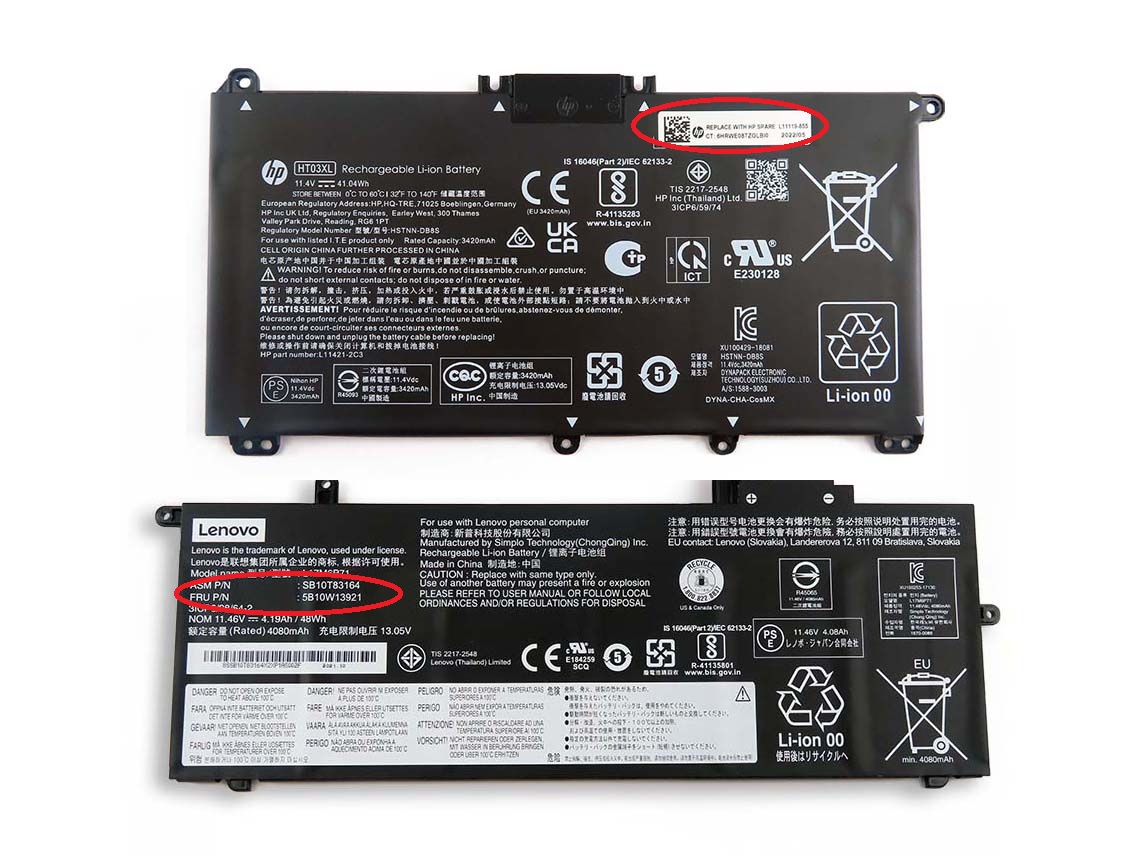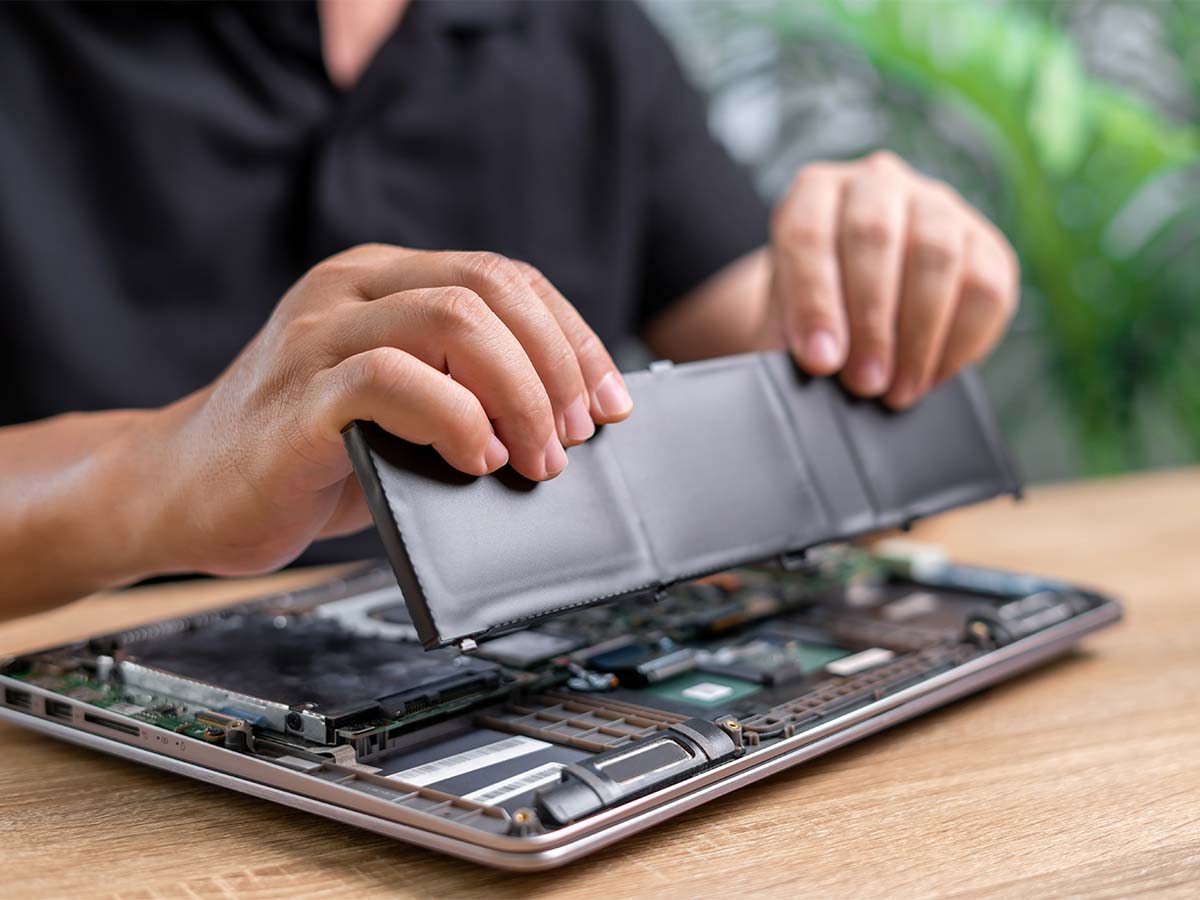Today we look at laptop batteries, one of the most frequently replaced components of a laptop. We examine tips to extend battery life and how to find and fit a replacement.
Maximising the lifespan of your battery
Laptop batteries are built to last for a certain number of charge cycles. A charge cycle represents one full discharge of the battery from 100% to 0%, with a partial discharge being a fraction of a cycle. With this in mind reducing the amount of power used by your laptop leads to less charge cycles being used and the battery’s lifespan being extended.
Steps you can take include changing Windows Power Options to use a more efficient power plan at the cost of some performance. Closing unnecessary or background programs will also reduce power usage. Other ways to reduce power consumption include lowering the brightness of the laptop’s screen and turning off the backlight or RGB lighting on the keyboard if they are present.
Excess heat can speed up battery degradation so its important to keep your laptop as cool as possible. Ensure that fan vents are unobstructed to assist with cooling.
Whilst lithium-ion batteries will degrade with time ensuring proper care is taken of the battery will maximise this lifespan.

Signs you need to replace your laptop’s battery
A laptop’s battery will degrade with time, reducing its capacity. If the battery discharges much quicker than it used to then it may be time to replace it. As well as quicker discharging you may find the battery becomes slower to charge, or doesn’t reach 100% capacity.
Physical signs of a failing battery include it overheating or swelling. A swollen battery can be dangerous and should be replaced immediately without further use.
Finally Windows and some laptop manufacturer’s software will often display a warning when a battery is no longer of a sufficient capacity and needs replacing.
Finding the correct battery
Identifying the part number of your battery can be done in a number of ways. The information is often listed in the maintenance manual for your machine or on the manufacturer’s website. The machine may support multiple batteries of differing capacities.
The part number will often be displayed on the battery itself so if it is easily removable this can be a good place to start.
If you are unable to find the information in other ways contact your laptop’s manufacturer directly who should be able to provide compatible part numbers.

Generic or genuine batteries
It is possible to buy replacement batteries from third party manufacturers rather than the original laptop brand. These are often cheaper and can be available after official support for the machine has been discontinued. However the quality of these batteries can vary greatly and for this reason we would always recommend buying manufacturers’ genuine replacement batteries.
Replacing the battery
The difficultly of replacing the battery varies greatly by machine. On a lot of machines a laptop battery replacement will simply involve releasing a catch on the base of the machine to release the old battery before putting the new one in place.
Some batteries are classed as customer non replaceable and are contained inside the machine and may require the removal of the base and other components in order to replace them. Whether you choose to attempt this yourself comes down to technical proficiency and confidence and if in doubt it is best to seek professional assistance with the replacement.

Common Battery Terminology
Watt-hour (wh) – Used to measure the capacity of a battery, representing the energy a battery can provide over time. A higher watt hour rating generally means the battery can power the laptop for a longer period of time.
Cells- The individual units that make up a battery that store and deliver electrical energy. Laptop batteries consist of multiple cells.
Volts – The unit of measurement of electric potential difference. It refers to the voltage produced by the battery

